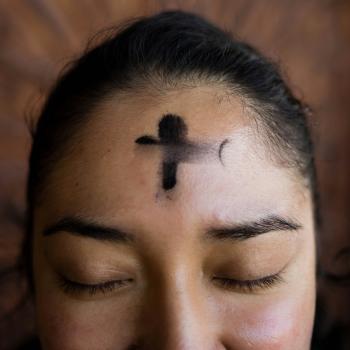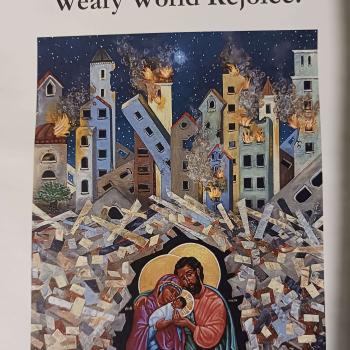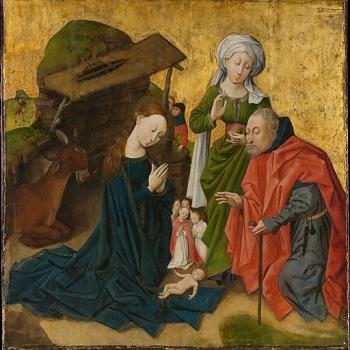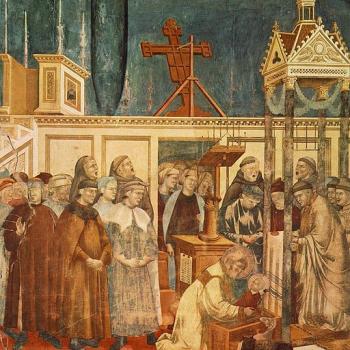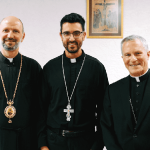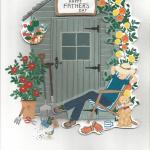The church’s Christmas season (which of course we’re still celebrating) begins where the secular one ends, with Christmas day itself as the pivot point between the two, the shared holy day of Christianity and secular consumerism. In the resulting syncretism, the Word of God who descends from heaven in the most radical act of kenosis in the history of the universe often has a tough time competing with the jolly fat man who descends from the North Pole to feed humanity’s self-indulgence.
Let me explain where this is not going. By referring to syncretism, I’m not talking about the pagan origins of some of our Euro-American cultural conventions such as mistletoe, yule logs or the ubiquitous Christmas tree, which may at one time have represented legitimate attempts to contextualize – yes, to incarnate – Christian faith into culturally comprehensible symbols, but which in our present context have effectively been emptied of any religious significance, pagan or Christian, and now remain as “mere” symbols in the weakest and most unsacramental sense of the word. Still less am I taking up the misguided cause of the culture warriors who seem to think they are doing Christ a favor by launching annual crusades to put his name in the mouth of every store clerk in every shopping mall. My point is rather the opposite: to invoke the name of Christ while worshiping at the temple to the pantheon of brand-name gods is not only syncretistic but may even cross a line into outright idolatry.
Now let me explain where this is coming from. After singing this tune in one variation or another for the past several years and being respectfully challenged a time or two on the church/world dichotomy (!) implicit in my cultural critique, I have come to realize that my opinionated preferences for how the Feast of the Nativity ought to be observed – including calling it that – essentially consist of Mennonite counterculturalism overlaid by a Catholic liturgical aesthetic. Although I come from a more world-assimilated branch of Mennonites, our separatist history has bequeathed us a sense of self-definition in contradistinction to “worldliness” that still runs deep. Without wanting to carry this into self-righteous purism, I remain sympathetic to the Mennonite impulse toward countercultural witness and uneasy about baptizing any elements of the surrounding culture that seem at odds with the self-emptying humility of Christ. And as a Catholic, I believe that good liturgy often has a similarly prophetic dimension in its telling of the Christian story, hopefully in a way that refreshes our realization of what a wild and crazy story it truly is. In the church there are times for feasting as well as fasting, but the true feast is liturgical – not a liturgy neatly separated from the world, nor one that settles for second place in a complacent coexistence with icons of overconsumption, but a liturgy that spills over and incarnates itself in the world in ways that are not self-serving but self-giving.
Maybe in the end I’m not really talking about keeping Christmas in the church so much as taking it beyond the church, to transform the world rather than be conformed to conventional expectations. Now for the practical question (admittedly my weak point): what might this look like in practice?



